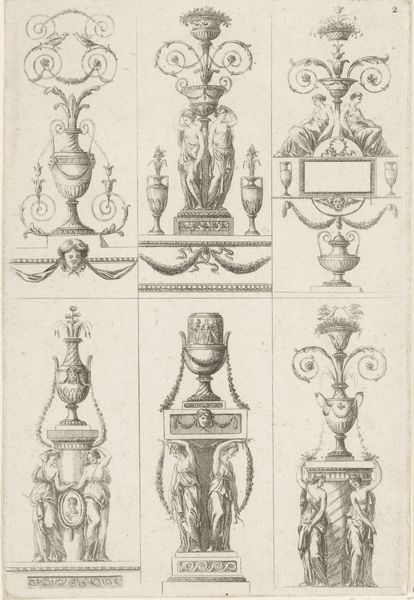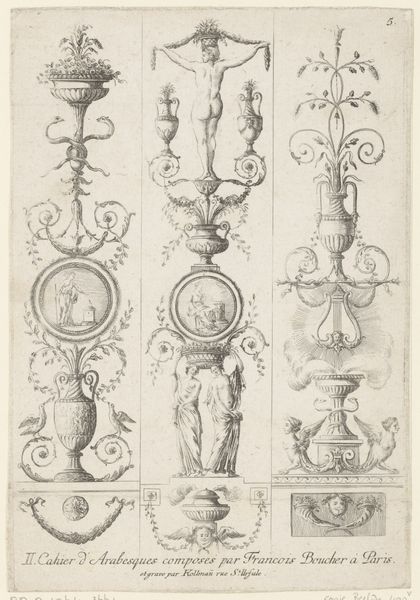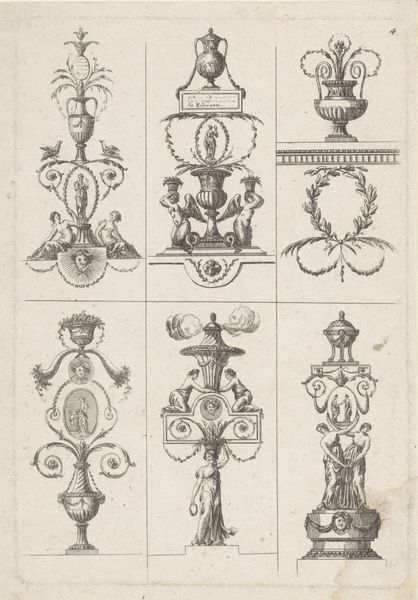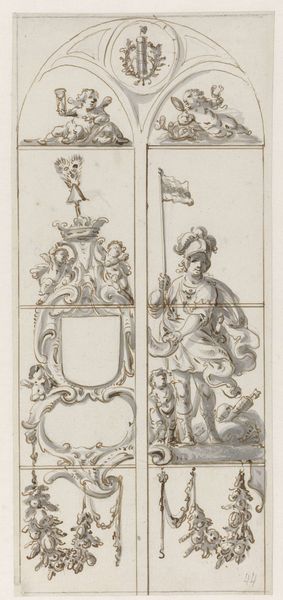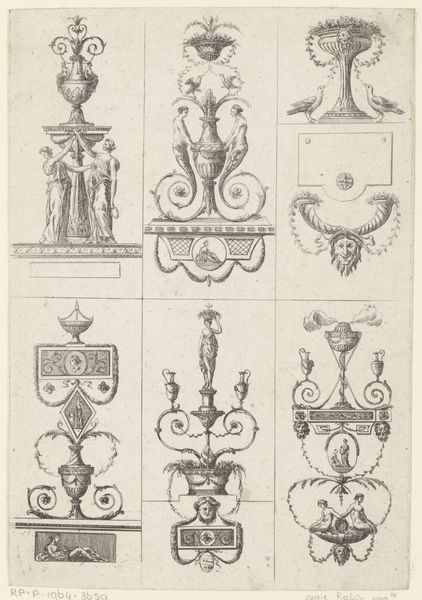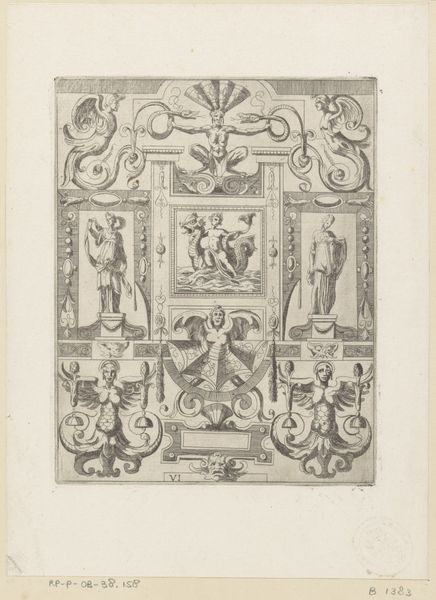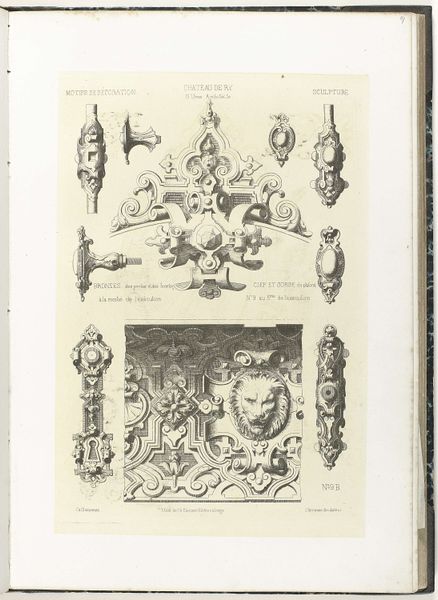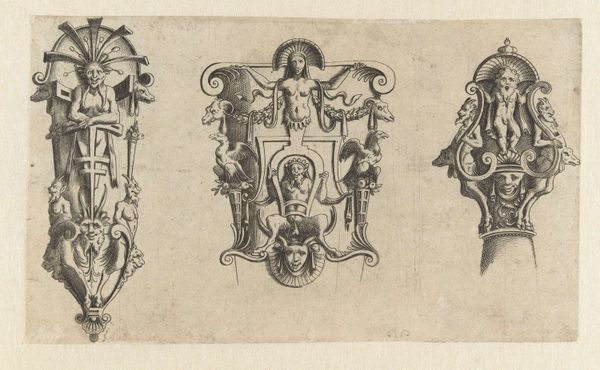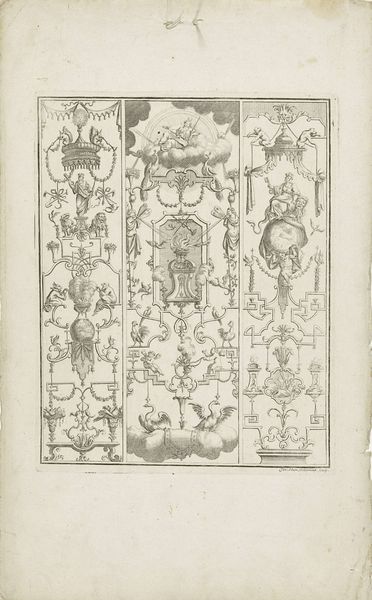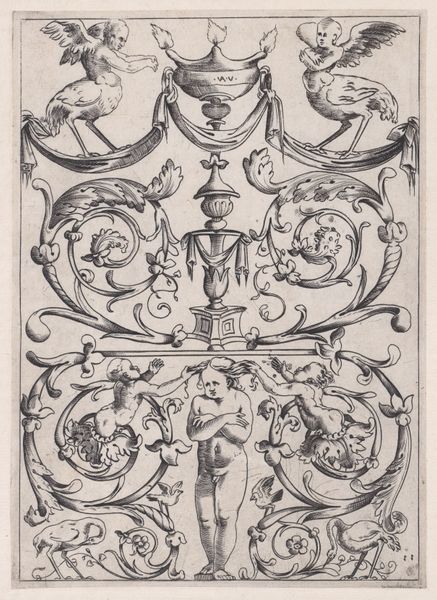
Dimensions: height 231 mm, width 160 mm
Copyright: Rijks Museum: Open Domain
Editor: This is "Vijf scènes met arabesken," or "Five Scenes with Arabesques," an engraving dating from around 1746-1800, currently at the Rijksmuseum. The flowing lines and classical figures give it a very elegant, almost dreamlike quality. What strikes you most when you look at this work? Curator: Immediately, I see a dialogue between classical ideals and a burgeoning Rococo sensibility. The figures themselves are borrowed from antiquity, but the extravagant ornamentation, the playful asymmetry... It suggests a cultural memory grappling with new aesthetic freedoms. Where do we find lasting meaning: in tradition, or embellishment? Editor: That’s fascinating. It’s like these rigid structures are being softened by the flourishes around them. Curator: Exactly! Think of the symbolic weight of each element. The vases – vessels of containment and potential – contrasted with the spilling abundance of the floral arrangements. What do these motifs communicate about control versus liberation? About mortality and everlasting aesthetic values? Editor: I hadn't considered that level of symbolic contrast. So the flowers bursting out of the vases represent… something breaking free? Curator: Perhaps, or perhaps an eternal, cyclical return. Rococo often used nature in this way - idealized and tamed, a nostalgic projection of an Arcadia ever-lost and yearned for. The arrangement evokes feelings, and that becomes a value to the beholder. Editor: I see now. This isn't just pretty decoration; it's a conversation about history, beauty, and emotion, encoded in symbols. Thank you! Curator: And thank you! Art offers a rich trove of memories, accessible across centuries through sustained viewing, attention to symbols, and active listening.
Comments
No comments
Be the first to comment and join the conversation on the ultimate creative platform.
